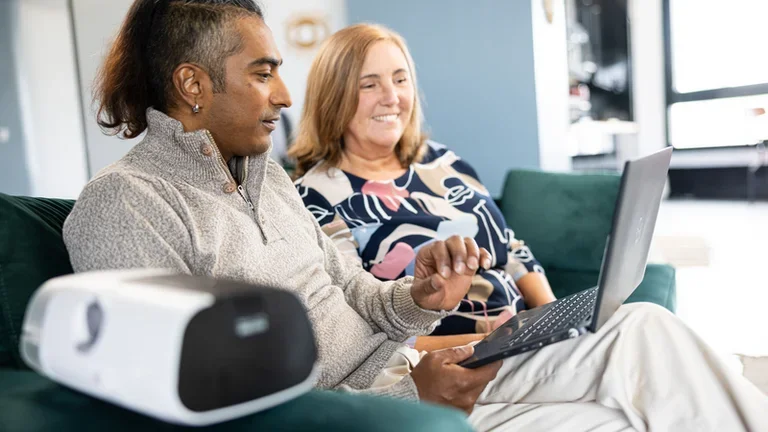Traveling with my CPAP
If you are being treated for sleep apnea, you should not think twice about arranging your vacation in the country or abroad
CPAP equipment: small and portable
It's easy to travel with your CPAP equipment – it's small and portable – and it's imperative not to interrupt your treatment routine.
All you need to do is prepare well in advance.
Check out some helpful tips to help you travel around with your CPAP.
It's easy to travel again!
Before leaving, you must:
Prepare a list of equipment you need to bring: your mask, mask holder, air tubing, power cord, CPAP and humidifier (if needed), plus an extension cord with multiple outlets if the electrical outlet is not next to the your bed. Always carry the CPAP in your travel bag.
Check what type of electrical outlet and voltage are used in the country you plan to visit if traveling abroad. If they are different from your country, you will need to bring the correct adapter. CPAP can be used in any country and most equipment is bivolt and automatically adapts to the proper voltage.
Bring your doctor's and healthcare provider's contact information, as well as your prescription or prescription and the CPAP User's Manual, in case of a failure or if you need a replacement item.
Empty your humidifier of all water before packing it.
Invest in a smaller CPAP or an even lighter, more portable second device if you travel frequently. You should also consider purchasing spare accessories for your mask and tubes, as well as external batteries and an additional power cord to power the CPAP if there is no electrical outlet on site.
Make sure you get a good night's sleep by putting your CPAP in your suitcase before you leave to avoid any unwanted sensations. Sleep apnea symptoms can sometimes recur after a single night without CPAP. ( 1.2)
Can I travel by plane with my CPAP?
Yes – the CPAP is a medical device and you can take it with you in the cabin. Many airlines do not include CPAP equipment in their carry-on baggage allowance. (3,5,6,7,8) CPAP's are safe to pass through the security check.
If you want to use CPAP during your flight, ask the airline before booking tickets. Some of them may not allow you to use it, but most will if you let them know in advance and have access to an electrical outlet or external battery. The use of the humidifier is not authorized inside aircraft. (1,2,3,8)
Have in mind
- High altitudes can make CPAP less efficient, but it is still advisable to use it.
- Even if there is no electrical outlet available, you can use the device if it has a battery for up to 8 hours .
- It is dangerous to use oxygen when operating the CPAP with a battery, so it is not recommended.
- Be careful: it is easy to damage CPAP equipment while traveling.
The effect of “jet lag”
The “jet lag” effect (time zone effect/tiredness) causes your biological clock to become out of sync and disrupt your sleep cycle . Check out some tips to minimize these effects.
- Adjust your watch to the new time zone as soon as the plane lands to help you adapt to the pace of your destination.
- Eat at local meal times.
- The day will be longer if you travel west, so take a nap in the morning, keep yourself exposed to light, and take a warm shower at night.



